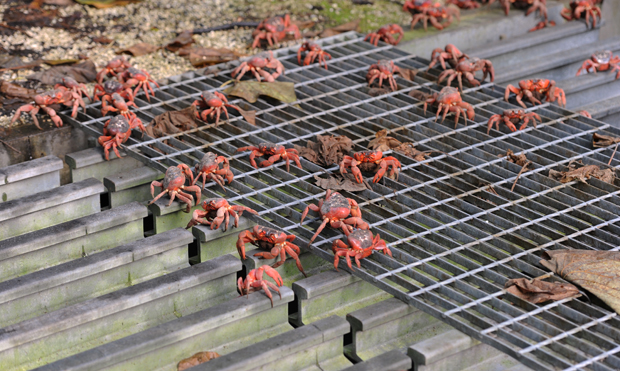The mass migration is headed by the males, quickly followed by the females. The crabs spend several painstaking weeks scuttling to the ocean, which can be as far as 9 km away.
Along the way they face numerous hazards. While the locals do the best as they can, according to ranger Max Orchard each year up to half a million crabs never return from their perilous journey. Many of these casualties fall under the wheels of vehicles as they attempt to traverse local roads, while others are attacked by yellow crazy ants.
Once the males arrive at the sea, they dig special burrows, where mating takes place once the females arrive. After the deed is done, the males begin the arduous journey back inland while the females remain in the burrows for about two weeks, laying eggs and waiting for them to develop. The eggs are held in a brood pouch – located between the female crab's abdomen and thorax – which can each hold as many as 100,000 eggs.
When the time is right, just before dawn at high tide, the egg-laden females descend to the waterline to release their eggs, a process that can occur over several nights.
Welcome to ...
The place where the world comes together in honesty and mirth.
Windmills Tilted, Scared Cows Butchered, Lies Skewered on the Lance of Reality ... or something to that effect.
Windmills Tilted, Scared Cows Butchered, Lies Skewered on the Lance of Reality ... or something to that effect.
Thursday, June 6, 2013
Red crab migration on Christmas Island
Photographer James D Morgan
chronicled the annual migration of the red crabs across Christmas Island
for Australian Geographic, documenting the amazing swarms of adorable
scuttlers as they rush to the sea in order to reproduce:
Subscribe to:
Post Comments (Atom)


No comments:
Post a Comment